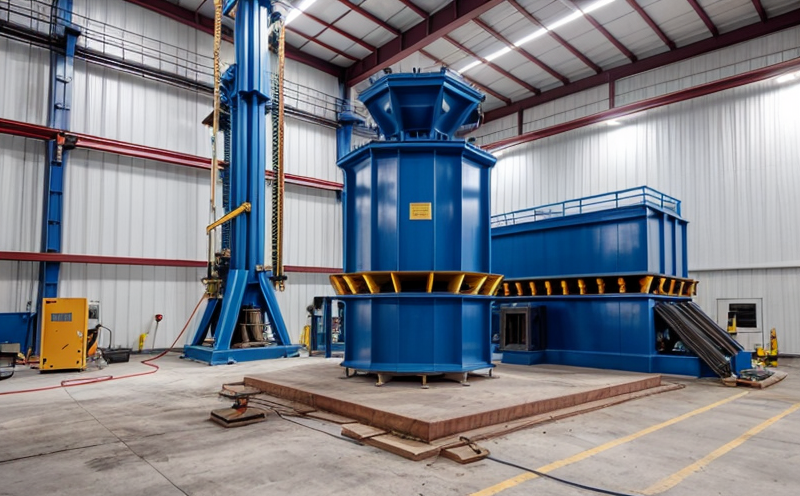ISO 21940-14 Structural Balancing Vibration Verification
The ISO 21940-14 standard provides a comprehensive framework for structural balancing vibration verification, particularly applicable to rotating machinery. This service ensures that the equipment's balance is optimized within specified limits, thereby minimizing vibrations and extending the lifespan of the machinery.
Structural balancing involves adjusting the mass distribution in rotating parts so that the center of mass is aligned with the axis of rotation. This process helps in reducing harmful vibrations that can lead to wear and tear on bearings, shafts, and other components. The verification step ensures that these adjustments meet the stringent criteria laid out by ISO 21940-14.
The service begins with a detailed inspection of the machinery's components to identify areas requiring balance correction. Once identified, precision balancing is performed using specialized equipment such as balancers and accelerometers. The process involves measuring the unbalance at various points on the rotating parts and making adjustments until the specified tolerances are met.
After verification, a detailed report is generated, outlining all the steps taken during the balancing process. This report includes data from measurements, calculations performed, and final acceptance criteria results. It serves as a crucial document for quality managers and compliance officers to ensure that the machinery meets international standards.
The ISO 21940-14 standard is widely recognized for its rigorous approach to vibration control in rotating machinery. By adhering to this standard, we provide clients with peace of mind knowing their equipment is operating at peak efficiency while minimizing potential risks associated with poor balance.
Our team of experts ensures that every aspect of the ISO 21940-14 process is followed meticulously. From initial inspection to final verification, our technicians use state-of-the-art tools and techniques to deliver accurate results. Our services are tailored to meet the specific needs of quality managers and compliance officers, ensuring that all equipment meets not only international standards but also exceeds expectations in terms of performance.
Compliance with ISO 21940-14 is essential for maintaining high standards of safety and reliability in industries such as aerospace, automotive manufacturing, and power generation. By providing this service, we help our clients stay ahead of regulatory requirements while improving overall operational efficiency.
Scope and Methodology
The scope of the ISO 21940-14 Structural Balancing Vibration Verification service includes a thorough inspection of the machinery's components to identify areas requiring balance correction. This is followed by precision balancing using specialized equipment such as balancers and accelerometers.
- Measurement of unbalance at various points on the rotating parts
- Making adjustments until specified tolerances are met
- Generation of a detailed report outlining all steps taken during the process
The methodology involves several key stages:
- Initial inspection to identify areas requiring balance correction
- Precision balancing using specialized equipment
- Verification against ISO 21940-14 standards
- Generation of a detailed report outlining all steps taken during the process
The service ensures that every aspect of the ISO 21940-14 process is followed meticulously. From initial inspection to final verification, our technicians use state-of-the-art tools and techniques to deliver accurate results.
| Stage | Description |
|---|---|
| Initial Inspection | Identification of areas requiring balance correction |
| Precision Balancing | Use of specialized equipment for balancing |
| Verification | Checking against ISO 21940-14 standards |
| Reporting | Generation of detailed reports outlining all steps taken during the process |
This structured approach ensures that the service is carried out efficiently and effectively, leading to optimal performance of the machinery.
Competitive Advantage and Market Impact
The ISO 21940-14 Structural Balancing Vibration Verification service offers significant competitive advantages in several key areas:
- Innovation Leadership: By adhering to the latest international standards, our clients stay at the forefront of technological advancements.
- Cost Efficiency: Early identification and correction of imbalances can prevent costly repairs and replacements down the line.
- Safety Assurance: Minimizing vibrations enhances safety by reducing wear on critical components like bearings and shafts.
- Increased Equipment Lifespan: Proper balance extends the operational life of machinery, leading to long-term savings for our clients.
In today's competitive market, maintaining high standards is crucial. Our ISO 21940-14 compliant services help businesses differentiate themselves by ensuring their equipment not only meets but exceeds regulatory requirements. This commitment to excellence builds trust with customers and stakeholders alike, fostering stronger relationships within the industry.
Use Cases and Application Examples
The ISO 21940-14 Structural Balancing Vibration Verification service has wide-ranging applications across various sectors. Here are some specific use cases:
- Aerospace Industry: Ensuring the balance of jet engines to enhance fuel efficiency and reduce noise.
- Automotive Manufacturing: Maintaining optimal performance in engine rotors to improve vehicle stability and ride comfort.
- Power Generation: Guaranteeing that turbine blades are balanced correctly to prevent structural damage and ensure safe operation.
| Use Case | Description |
|---|---|
| Aerospace Industry | Ensuring the balance of jet engines for enhanced fuel efficiency and reduced noise |
| Automotive Manufacturing | Maintaining optimal performance in engine rotors to improve vehicle stability and ride comfort |
| Power Generation | Guaranteeing that turbine blades are balanced correctly for safe operation and structural integrity |
In addition to these sectors, the service is also applicable in other industries where rotating machinery plays a critical role. The precision balancing provided ensures that each piece of equipment operates at its best possible condition.





